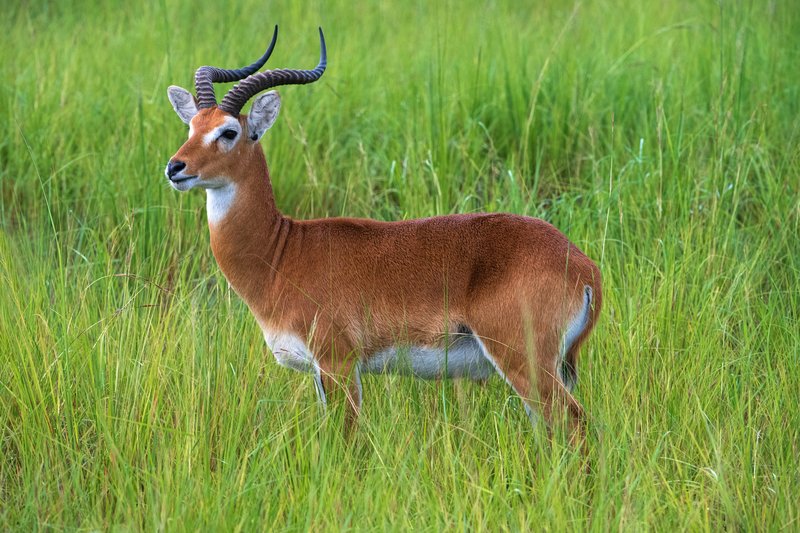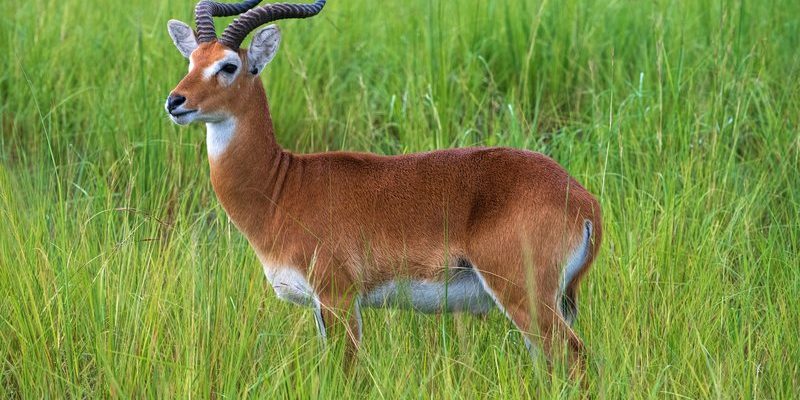
The Ugandan kob isn’t just a pretty face; it plays an essential role in its ecosystem. These creatures are a vital part of their habitat, influencing the vegetation and even serving as prey for larger predators. If you’re curious about this enchanting animal and want to learn more, you’re in for a treat! Here are ten fascinating facts that illustrate why the Ugandan kob deserves a spotlight.
1. Unique Habitat and Distribution
The Ugandan kob is primarily found in the grasslands and savannas of Uganda, particularly in places like Queen Elizabeth National Park and Murchison Falls National Park. Their habitat choice isn’t random. These areas provide the right mix of grasses for grazing and bushes for shelter, making it a perfect home.
Interestingly, the kob tends to stay close to water sources. This behavior is pretty strategic. Staying near water helps them stay hydrated and gives them a safe place to escape from predators. So, if you’re on a safari in Uganda, keep your eyes peeled near watering holes—you might just spot a group of these striking animals!
2. Distinct Physical Features
Ugandan kobs are medium-sized antelopes, typically weighing between 70 to 120 pounds. They sport a tawny coat with white markings, especially around their eyes and underbelly, making them stand out beautifully against the green grass. It’s almost as if they’re wearing a stylish outfit designed for blending in while still being eye-catching.
Males are particularly striking, boasting curved horns that can reach up to 30 inches long. These horns aren’t just there for show; they play a crucial role in establishing dominance during mating season. If you see a couple of males sparring, it’s quite a sight! Their horns and stature make them look formidable, yet they possess an elegance that’s hard to ignore.
3. Social Structure
Social creatures at heart, Ugandan kobs often live in herds. These herds can range from a handful of individuals to several dozen. They exhibit a fascinating social structure, usually led by a dominant male. This male isn’t just a figurehead; he defends his group from rival males and attracts females during mating season.
Interestingly, females and young males will form separate groups, allowing for more stable social interactions. You might wonder how they communicate within these herds. Kobs use a variety of vocalizations, body language, and even their unique tail posture to convey messages to one another. If you’ve ever tried to understand your dog’s wagging tail, think of kobs as masters of non-verbal cues!
4. Feeding Habits
Kobs are grazers, primarily feeding on grasses. However, they aren’t picky eaters. Their diet can include a mix of herbs and shrubs, especially during the dry season when grass becomes scarce. Think of them as the lawnmowers of the savanna, keeping the vegetation in check while also maintaining their own nutritional needs.
Their feeding habits also play a crucial role in the ecosystem. By trimming grass, they help encourage new growth and provide habitats for other animals and insects. Plus, when they graze, they often disturb the ground, which aids in seed dispersal. This benefit to their environment is one of those hidden gems of nature that many don’t think about.
5. Breeding and Reproduction
The breeding season for Ugandan kobs usually peaks during the rainy season, creating a vibrant, joyful environment. Males engage in spirited displays to win the attention of females, showcasing their strength and vitality. You might say it’s the antelope version of a talent show, where the best performers earn their place in the spotlight.
After a gestation period of about seven months, females give birth to a single calf, which is typically hidden in tall grass for safety during its first few weeks. This strategy, though simple, is incredibly effective; it keeps the young kobs out of sight of potential predators. Once they’re a bit older and stronger, they join the herd, often becoming a part of that dynamic social structure we talked about earlier.
6. Predator and Prey Dynamics
Like all creatures in the wild, Ugandan kobs have their share of predators. They are often hunted by lions, leopards, and hyenas. However, their keen senses play a critical role in their survival. Kobs are known for their exceptional eyesight and hearing, allowing them to spot danger long before it gets close.
When faced with danger, they rely on their agility and speed to escape. Picture a sprinter taking off from the starting line; that’s how these antelopes react! Their ability to make sharp turns while running helps them evade their foes and navigate their environment effectively.
7. Conservation Status
Currently, the Ugandan kob is classified as “Least Concern” on the IUCN Red List, which is a relief considering many species face threats of extinction. However, they aren’t without challenges. Habitat loss due to agricultural expansion and poaching still pose significant risks.
Conservation efforts are in place, with several national parks dedicated to protecting these animals and their environments. Local communities are also engaged in conservation awareness, which is key to ensuring the kob populations remain stable. Think of it as teamwork between nature enthusiasts, park rangers, and everyday people working to ensure these lovely creatures continue to thrive.
8. Cultural Significance
The Ugandan kob holds a special place in the hearts of many Ugandans. Not only is it a symbol of the country’s wildlife heritage, but it also features in local folklore and traditions. This connection to culture makes the kob more than just another animal; it’s a part of Uganda’s identity.
In some communities, the kob is seen as a symbol of grace and beauty, often inspiring art, dance, and storytelling. You can sense a deep respect for the creature, which adds another layer of significance to its existence beyond mere survival.
9. Adaptations to Environment
One of the most fascinating aspects of the Ugandan kob is its ability to adapt to its environment. For instance, during the dry season, these animals are known to travel further in search of food and water. Their migratory behavior is strategic, allowing them to survive in changing conditions.
Moreover, their physical adaptations, like being able to run at high speeds, are crucial for escaping predators. They’re built for survival, with strong muscular legs that allow them to leap over obstacles effortlessly. It’s a true testament to nature’s ingenuity in crafting a creature that thrives in diverse landscapes.
10. Ecotourism Attraction
For wildlife enthusiasts and travelers, the Ugandan kob is a major attraction. With their striking appearance and captivating behaviors, they are a highlight on many safaris in Uganda. Tourists flock to national parks, hoping to catch a glimpse of these beautiful antelopes in their natural habitat.
Ecotourism not only boosts local economies but also emphasizes the importance of conservation. When people appreciate the beauty and significance of the Ugandan kob, it fosters a deeper connection to the environment. Supporting this industry helps protect the kob and the ecosystems they inhabit, ensuring that future generations can also enjoy their charm.
In conclusion, the Ugandan kob is a remarkable creature that plays a vital role in its ecosystem and offers a glimpse into the beauty of Uganda’s wildlife. From their graceful movements on the savanna to their rich cultural significance, there’s so much more to these antelopes than meets the eye. Whether you’re planning a trip or just intrigued by nature, understanding the life of the Ugandan kob adds depth to the appreciation of wildlife. So next time you think about Africa’s majestic animals, let the Ugandan kob hop into your mind as a symbol of grace, resilience, and charm!

